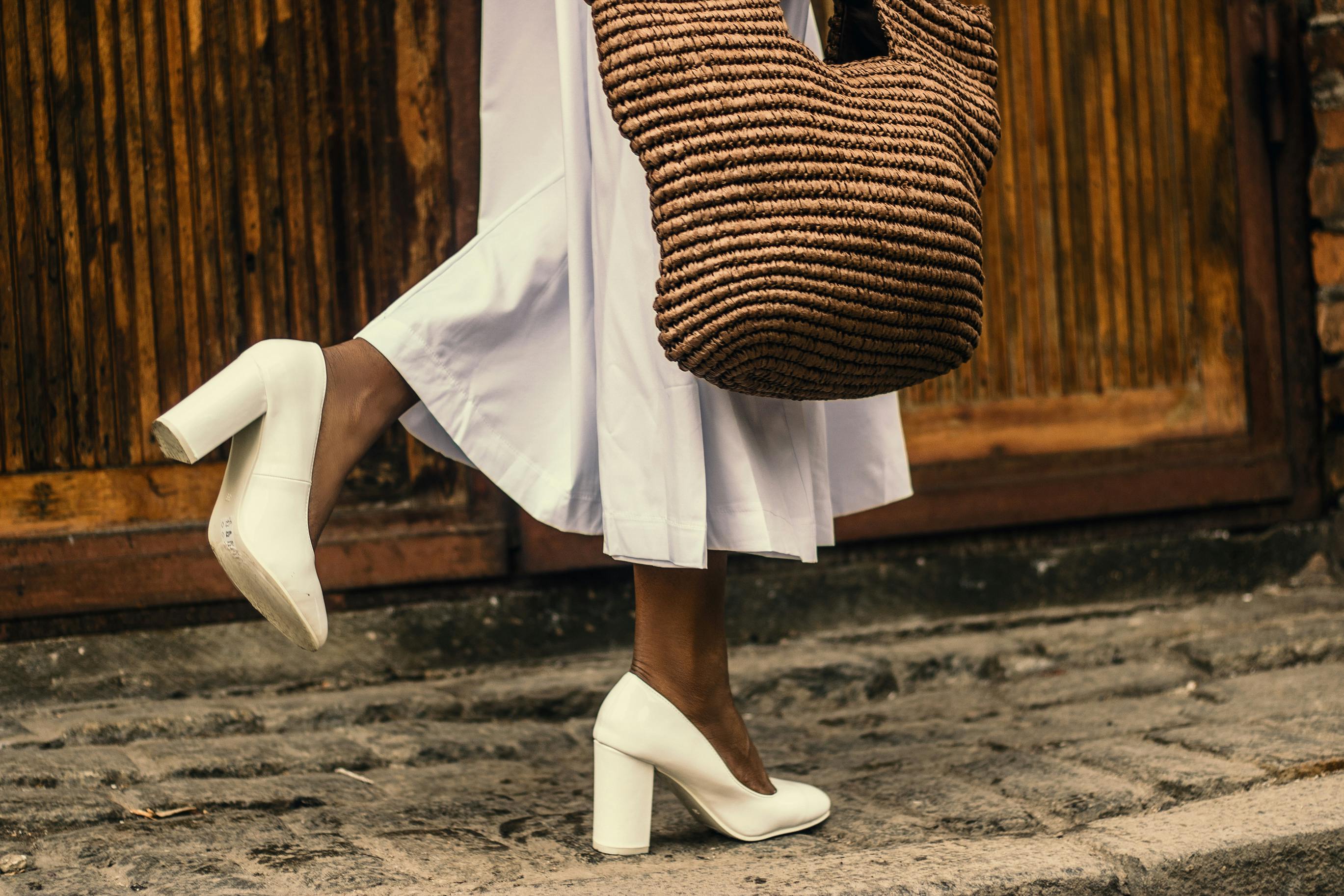Why Are My Toes Numb After Wearing Heels

Wearing high heels can be a great way to make a fashion statement and add some extra height to your look. However, many people experience numb toes after wearing heels, which can be uncomfortable and even painful. This article will explore why toes can become numb after wearing heels and what you can do to prevent or reduce this sensation.Wearing high heels for a prolonged period of time can cause numb toes due to the pressure it places on the nerves in the foot. This can be caused by the narrow toe box, which restricts blood flow and causes a decrease in circulation. The lack of proper arch support and squeezing of the foot can also lead to compression of the nerves, resulting in a tingling or numb sensation.
Numb Toes
Numb toes is a common condition that can cause a loss of sensation in the toes. Symptoms of numb toes can range from a mild tingling sensation to complete numbness and loss of feeling. Numb toes can be caused by medical conditions such as diabetes, nerve damage, or even trauma to the foot. It is important to seek medical attention if you experience any symptoms of numbness in your toes so that the underlying cause can be identified and treated appropriately.
The most common symptom of numb toes is a tingling or burning sensation in the affected area. This sensation may start as a mild annoyance but can progress to intense pain if left untreated. Other symptoms may include a feeling of tightness or pressure in the affected area, or even complete numbness and loss of feeling. In some cases, there may also be discoloration or swelling associated with the affected area.
It is important to seek medical attention if you experience any symptoms of numb toes so that the underlying cause can be identified and treated appropriately. Your doctor will likely take an X-ray to check for fractures or other structural issues, as well as order blood tests to screen for diabetes or other metabolic disorders. Treatment will depend on the underlying cause, but may include lifestyle changes such as improved diet and exercise, medications, physical therapy, or even surgery in cases where there is nerve damage or other structural issues.
It is important to take care of your feet and see your doctor if you experience any symptoms of numb toes so that they can properly diagnose the issue and provide appropriate treatment.
How to Reduce Numbness in the Toes When Wearing Heels?
Wearing heels can be a great way to add a touch of glamour to your look, but it can also lead to numbness in the toes. This is because the pressure from the heel can cause circulation problems, leading to a loss of feeling in the toes. Fortunately, there are some simple steps you can take to reduce this numbness and make wearing heels more comfortable.
Firstly, it’s important to make sure that you’re wearing the correct size of shoe and that your heels are not too tight or too high. A well-fitted pair of shoes will help distribute weight evenly across your feet and reduce any discomfort. Also, make sure you don’t wear your heels for extended periods of time; give your feet a break by wearing flats throughout the day or changing into flats or sneakers if you plan on being on your feet for an extended period.
Secondly, try using cushioned insoles when wearing heels. These insoles provide extra cushioning in the areas where pressure is greatest and help reduce numbness in the toes. Additionally, try using toe spacers or gel toe separators which can also help with circulation and reduce discomfort.
Finally, it’s important to stretch out your feet before and after wearing heels. This will help increase blood flow throughout the foot and reduce any numbness that you may have experienced while wearing heels. To stretch out your feet, try rolling them over a tennis ball or using a massager device specifically designed for foot massage.
By following these simple tips, you’ll be able to reduce numbness in the toes when wearing heels and enjoy them without discomfort!
Is It Normal to Feel Pain in the Toes After Wearing Heels?
It is not unusual for people to experience pain in their toes after wearing heels. This is because the heels can put a lot of pressure on the toes, which can lead to discomfort. Heels can also cause blisters, calluses, and corns on the feet, which can be painful. Additionally, wearing heels for extended periods of time can cause the calves to become overly tightened and sore.
The best way to prevent pain from wearing heels is to ensure that they fit properly. Shoes that are too tight or too loose may cause irritation or rubbing in the toes. It’s important to select shoes that provide good support and cushioning for the feet as well. Avoiding walking in heels for extended periods of time and taking breaks throughout the day can also help reduce any pain or discomfort associated with wearing them.
It’s also important to stretch before and after wearing heels as this will help alleviate any tightness in the muscles and tendons of the feet and legs. Additionally, applying a moisturizing cream or balm before putting on shoes can help protect against any rubbing or friction in the toes. If you’re experiencing severe pain after wearing heels, it’s recommended that you see a doctor as this could be a sign of an underlying medical condition such as plantar fasciitis or Achilles tendinitis.
In conclusion, it is normal to feel pain in your toes after wearing heels but there are some preventative measures you can take to reduce this discomfort. Wearing shoes that fit properly, taking regular breaks throughout the day, stretching before and after wearing them, and using moisturizing creams or balms are all recommended ways of preventing foot pain from wearing heels. If you’re still experiencing severe pain after taking these steps it’s best to consult with your doctor for further advice on how best to manage your symptoms.
Protecting Your Feet from High Heels
High heels can be fashionable and fun, but they can also be hard on your feet. If you love wearing high heels, there are a few things you can do to keep your feet healthy and comfortable while wearing them.
The first thing you should do is make sure the shoes fit correctly. Shoes that are too tight or too loose can cause blisters and other problems. It’s best to buy shoes that are designed for comfort and fit your feet well. Make sure that the heel is wide enough to provide support, and the toe box is wide enough for all of your toes. You may also want to choose shoes with cushioning or arch support for additional comfort.
Another way to protect your feet when wearing high heels is to limit how long you wear them each day. Try not to wear them for more than a few hours at a time. If you must stand for long periods of time in high heels, take breaks often so that your feet can rest and recover. You should also alternate between different pairs of shoes throughout the day if possible, as this will help reduce stress on your feet from any one pair of shoes.
Finally, it’s important to stretch your feet regularly when wearing high heels. Take time before and after wearing them to stretch out your toes, ankles, calves, and Achilles tendons in order to prevent muscle cramping or stiffness. This will help reduce pain and discomfort while wearing high heels as well as improve overall foot health over time.
By taking these precautionary measures, you can enjoy the fashion benefits of high heels while still keeping your feet healthy and comfortable!

Reducing Swelling and Pain in Feet from High Heels
One of the most common complaints about wearing high heels is the pain and swelling they can cause in the feet. This is especially true for those who wear them for extended periods of time, such as all day at work or at a special event. Fortunately, there are a few simple strategies that can be employed to reduce swelling and pain in the feet when wearing high heels.
Take Breaks
The first and perhaps most important step to reducing swelling and pain is to take regular breaks from your high heels. Taking short breaks throughout the day will allow your feet time to rest, reducing the amount of strain that is put on them. It’s also a good idea to switch to more comfortable shoes after spending an extended period of time in high heels.
Stretch Your Feet
Another way to reduce swelling and pain in your feet from high heels is by stretching them out periodically throughout the day. Stretching helps relax the muscles in your feet, which can help reduce tension and soreness. Simple stretches such as pointing your toes or rotating your ankles can provide relief from any discomfort you may be feeling.
Choose Comfortable Shoes
When possible, it’s always best to choose shoes that are comfortable and supportive. Shoes with a low heel are generally more comfortable than higher heeled ones, as they provide more cushioning for your feet and distribute weight more evenly across them. Additionally, look for shoes with straps or laces that fit securely around your foot, as this will help prevent slippage which can lead to blisters or other forms of discomfort.
Wear Inserts
Finally, wearing inserts such as gel cushions or arch supports can help reduce pressure on the feet when wearing high heels. These inserts are designed specifically for providing extra support and cushioning in areas where it’s needed most, allowing you to stay comfortable even when wearing high heels for extended periods of time.
Should I Wear Flats to Avoid Numb Toes After Wearing Heels?
Wearing heels can be fashionable, but it also comes with a host of potential problems, including numb toes. If you find that your toes become numb after wearing heels for an extended period of time, it may be beneficial to switch to flats. This can help to reduce the pressure on your toes and will help to improve circulation. It is also important to make sure that you choose shoes that fit properly and provide enough support. Shoes that are too tight or too loose can lead to numbness in your toes as well.
Flats can provide relief from the pressure and discomfort associated with wearing heels, but they may not be as fashionable as some people would like. There are many stylish flats available, however, so it is possible to find a pair that fits your style while still providing the comfort and support you need. Additionally, if you are going to be wearing heels for an extended period of time, it may be beneficial to bring along a pair of flats so you can switch them out when needed.
Before making any decisions regarding shoe choice, it is important to talk with your doctor if you are concerned about potential health issues such as numbness in your toes. Your doctor may be able to suggest more appropriate footwear options based on your individual needs and lifestyle. In any case, switching between different styles of footwear can help reduce the risk of developing any foot-related problems from wearing heels for too long.
How Long Does It Take for Feet to Recover After Wearing High Heels?
Recovering from wearing high heels can take anywhere from a few days to several weeks, depending on the level of discomfort experienced. Wearing high heels can cause a number of issues in the feet, including bunions, pain, and discomfort. The most common issue is heel pain, which can be caused by the pressure placed on the heel when walking or standing in high heels for long periods of time. The amount of time it takes to recover from wearing high heels depends on how long you have been wearing them and how severe your discomfort is.
If you have been wearing high heels for a longer period, such as months or years, then it may take longer to recover as your feet will be more used to the pressure and will need more time to adjust back to their natural shape and form. If you are just starting out with wearing high heels then recovery should be much faster as your feet have not had time to become accustomed to the pressure.
In addition to allowing your feet time to recover, there are some steps you can take to ensure that they heal as quickly as possible. One of the best things you can do is give your feet plenty of rest after wearing high heels – try not to wear them too often and make sure that when you do wear them, they are not too tight or uncomfortable. You should also try using cushioned insoles in your shoes which will help reduce the amount of pressure on your feet and provide some cushioning while walking or standing in them. Finally, using foot creams and balms regularly will help soothe any soreness or discomfort that may occur after prolonged use.
Overall, it is important to remember that recovery from wearing high heels does take some time but with proper care and attention it can be significantly reduced. Taking regular breaks from wearing them and ensuring that they fit properly are key steps in helping your feet recover quickly so that you can enjoy wearing them again without any pain or discomfort.

Conclusion
Wearing heels may be fashionable, but it can also cause numbness in your toes. This is because the toes are compressed into the toe box of the shoe, which can cause pressure on the nerves in your feet. The numbness is usually temporary, but it’s important to make sure that your shoes fit properly and that you take regular breaks from wearing heels to reduce foot pain and discomfort. If you experience prolonged or severe numbness, it’s best to consult a doctor as it may be a sign of an underlying condition.
In conclusion, wearing heels can be fashionable and stylish, but it’s important to pay attention to how they fit and how long you’re wearing them for. Taking care of your feet by making sure your shoes fit properly and taking regular breaks from wearing heels will help reduce any discomfort or numbness that you experience.
